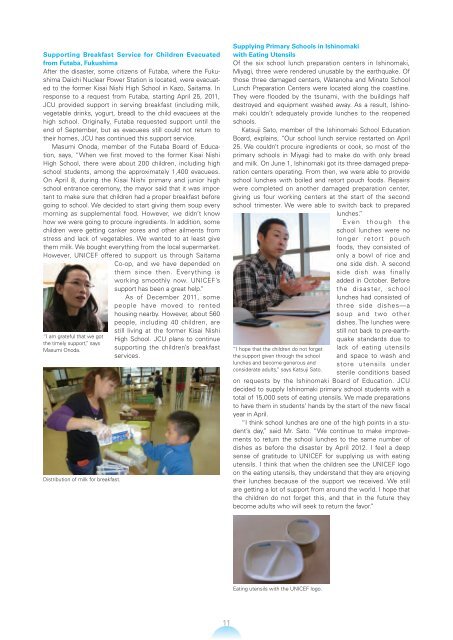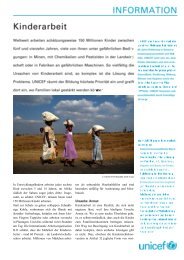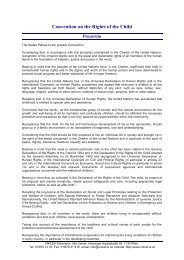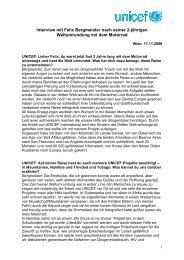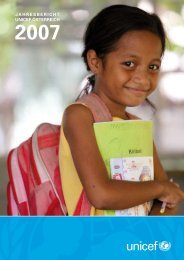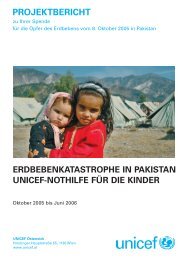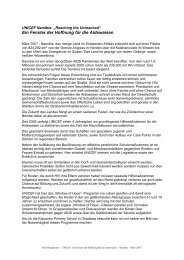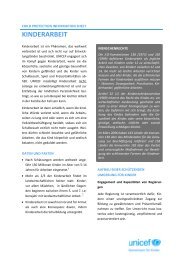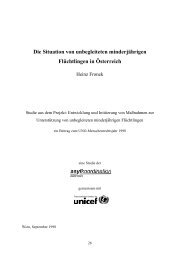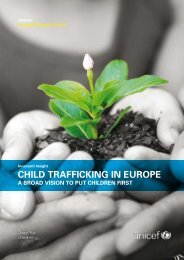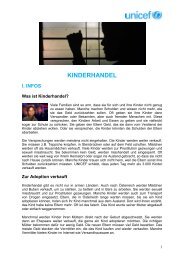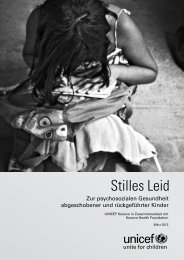You also want an ePaper? Increase the reach of your titles
YUMPU automatically turns print PDFs into web optimized ePapers that Google loves.
Supporting Breakfast Service for Children Evacuated<br />
from Futaba, Fukushima<br />
After the disaster, some citizens of Futaba, where the Fukushima<br />
Daiichi Nuclear Power Station is located, were evacuated<br />
to the former Kisai Nishi High School in Kazo, Saitama. In<br />
response to a request from Futaba, starting April 25, 2011,<br />
JCU provided support in serving breakfast (including milk,<br />
vegetable drinks, yogurt, bread) to the child evacuees at the<br />
high school. Originally, Futaba requested support until the<br />
end of September, but as evacuees still could not return to<br />
their homes, JCU has continued this support service.<br />
Masumi Onoda, member of the Futaba Board of Education,<br />
says, “When we first moved to the former Kisai Nishi<br />
High School, there were about 200 children, including high<br />
school students, among the approximately 1,400 evacuees.<br />
On April 8, during the Kisai Nishi primary and junior high<br />
school entrance ceremony, the mayor said that it was important<br />
to make sure that children had a proper breakfast before<br />
going to school. We decided to start giving them soup every<br />
morning as supplemental food. However, we didn’t know<br />
how we were going to procure ingredients. In addition, some<br />
children were getting canker sores and other ailments from<br />
stress and lack of vegetables. We wanted to at least give<br />
them milk. We bought everything from the local supermarket.<br />
However, UNICEF offered to support us through Saitama<br />
Co-op, and we have depended on<br />
them since then. Everything is<br />
working smoothly now. UNICEF’s<br />
support has been a great help.”<br />
As of December 2011, some<br />
people have moved to rented<br />
housing nearby. However, about 560<br />
people, including 40 children, are<br />
“I am grateful that we got<br />
the timely support,” says<br />
Masumi Onoda.<br />
Distribution of milk for breakfast.<br />
still living at the former Kisai Nishi<br />
High School. JCU plans to continue<br />
supporting the children’s breakfast<br />
services.<br />
11<br />
Supplying Primary Schools in Ishinomaki<br />
with Eating Utensils<br />
Of the six school lunch preparation centers in Ishinomaki,<br />
Miyagi, three were rendered unusable by the earthquake. Of<br />
those three damaged centers, Watanoha and Minato School<br />
Lunch Preparation Centers were located along the coastline.<br />
They were flooded by the tsunami, with the buildings half<br />
destroyed and equipment washed away. As a result, Ishinomaki<br />
couldn’t adequately provide lunches to the reopened<br />
schools.<br />
Katsuji Sato, member of the Ishinomaki School Education<br />
Board, explains, “Our school lunch service restarted on April<br />
25. We couldn’t procure ingredients or cook, so most of the<br />
primary schools in Miyagi had to make do with only bread<br />
and milk. On June 1, Ishinomaki got its three damaged preparation<br />
centers operating. From then, we were able to provide<br />
school lunches with boiled and retort pouch foods. Repairs<br />
were completed on another damaged preparation center,<br />
giving us four working centers at the start of the second<br />
school trimester. We were able to switch back to prepared<br />
lunches.”<br />
E v e n t h o u g h t h e<br />
school lunches were no<br />
longer retort pouch<br />
foods, they consisted of<br />
only a bowl of rice and<br />
one side dish. A second<br />
side dish was finally<br />
added in October. Before<br />
the disaster, school<br />
lunches had consisted of<br />
three side dishes—a<br />
soup and two other<br />
dishes. The lunches were<br />
still not back to pre-earthquake<br />
standards due to<br />
“I hope that the children do not forget<br />
the support given through the school<br />
lunches and become generous and<br />
considerate adults,” says Katsuji Sato.<br />
lack of eating utensils<br />
and space to wash and<br />
store utensils under<br />
sterile conditions based<br />
on requests by the Ishinomaki Board of Education. JCU<br />
decided to supply Ishinomaki primary school students with a<br />
total of 15,000 sets of eating utensils. We made preparations<br />
to have them in students’ hands by the start of the new fiscal<br />
year in April.<br />
“I think school lunches are one of the high points in a student’s<br />
day,” said Mr. Sato. “We continue to make improvements<br />
to return the school lunches to the same number of<br />
dishes as before the disaster by April 2012. I feel a deep<br />
sense of gratitude to UNICEF for supplying us with eating<br />
utensils. I think that when the children see the UNICEF logo<br />
on the eating utensils, they understand that they are enjoying<br />
their lunches because of the support we received. We still<br />
are getting a lot of support from around the world. I hope that<br />
the children do not forget this, and that in the future they<br />
become adults who will seek to return the favor.”<br />
Eating utensils with the UNICEF logo.


